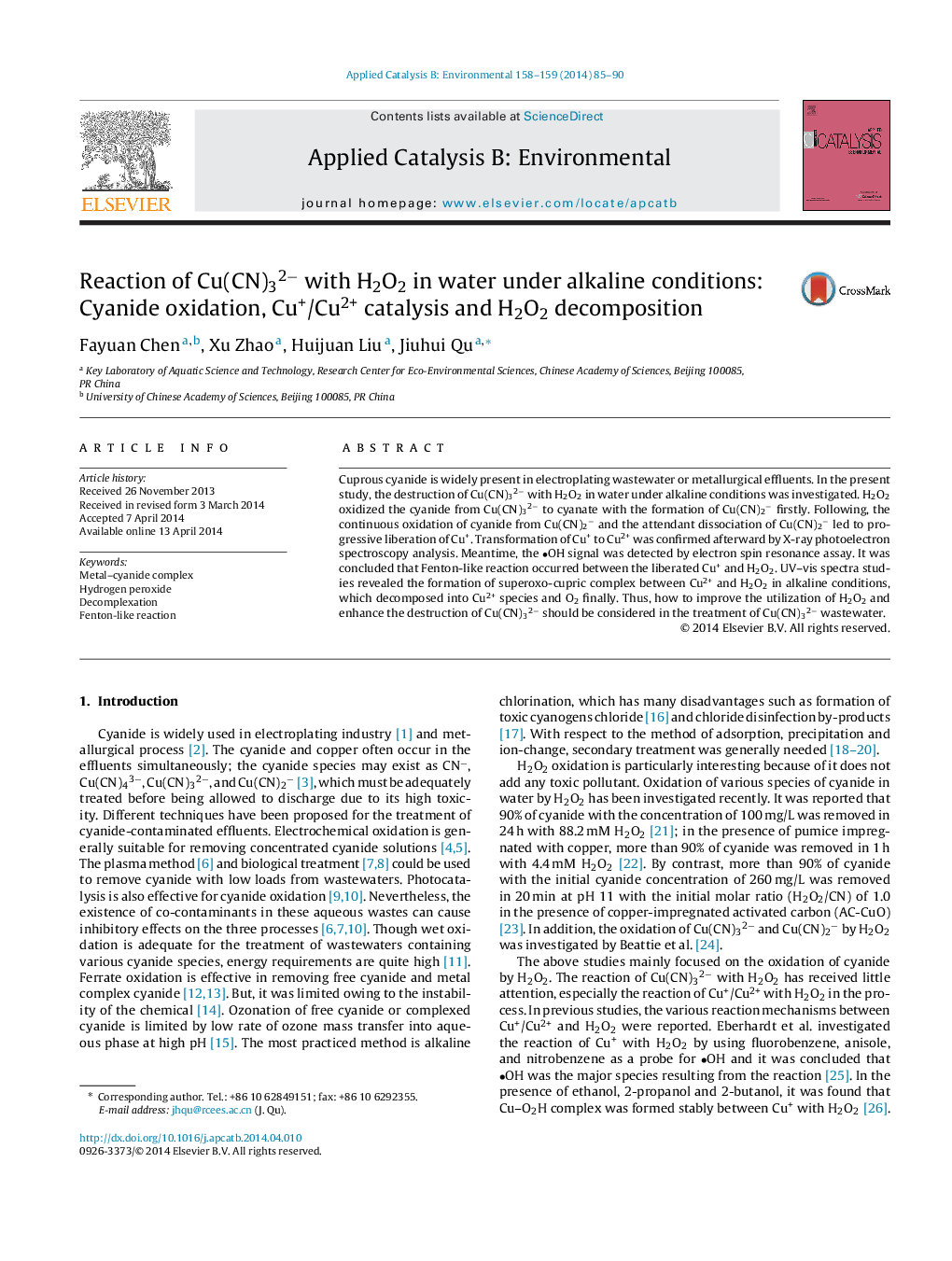| کد مقاله | کد نشریه | سال انتشار | مقاله انگلیسی | نسخه تمام متن |
|---|---|---|---|---|
| 45857 | 46426 | 2014 | 6 صفحه PDF | دانلود رایگان |

• H2O2 oxidized Cu(CN)32− to Cu(CN)2− with the formation of cyanate and H2O firstly.
• The oxidation of cyanide from Cu(CN)2− led to Cu+ liberation.
• The Fenton-like reaction proceeded between the released Cu+ and H2O2.
• H2O2 was decomposed into O2 due to catalysis of Cu+/Cu2+ under alkaline conditions.
Cuprous cyanide is widely present in electroplating wastewater or metallurgical effluents. In the present study, the destruction of Cu(CN)32− with H2O2 in water under alkaline conditions was investigated. H2O2 oxidized the cyanide from Cu(CN)32− to cyanate with the formation of Cu(CN)2− firstly. Following, the continuous oxidation of cyanide from Cu(CN)2− and the attendant dissociation of Cu(CN)2− led to progressive liberation of Cu+. Transformation of Cu+ to Cu2+ was confirmed afterward by X-ray photoelectron spectroscopy analysis. Meantime, the
• OH signal was detected by electron spin resonance assay. It was concluded that Fenton-like reaction occurred between the liberated Cu+ and H2O2. UV–vis spectra studies revealed the formation of superoxo-cupric complex between Cu2+ and H2O2 in alkaline conditions, which decomposed into Cu2+ species and O2 finally. Thus, how to improve the utilization of H2O2 and enhance the destruction of Cu(CN)32− should be considered in the treatment of Cu(CN)32− wastewater.
Figure optionsDownload as PowerPoint slide
Journal: Applied Catalysis B: Environmental - Volumes 158–159, October 2014, Pages 85–90